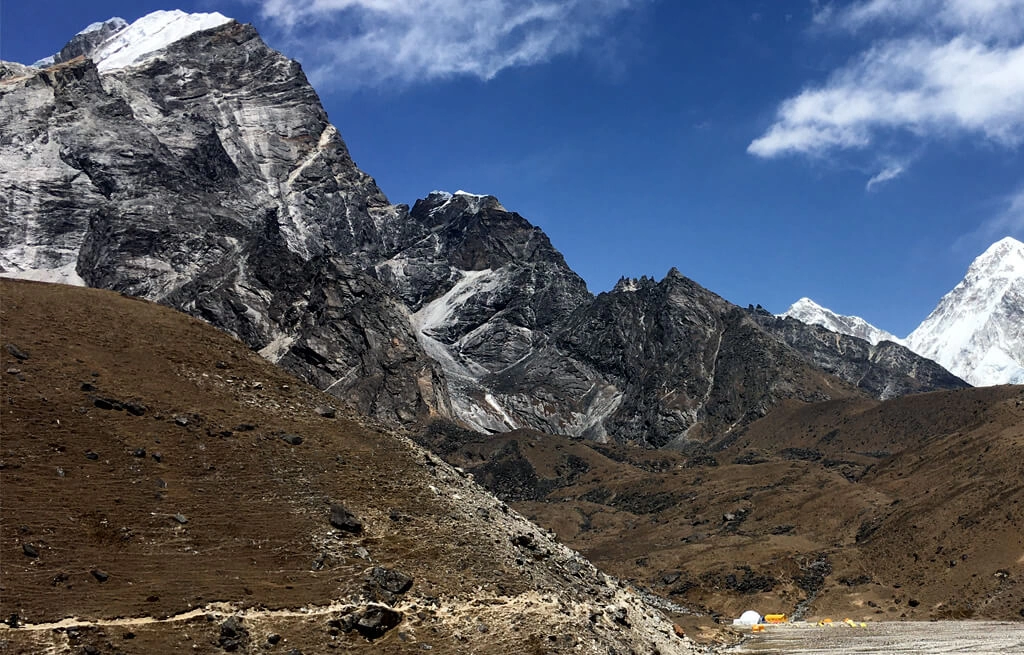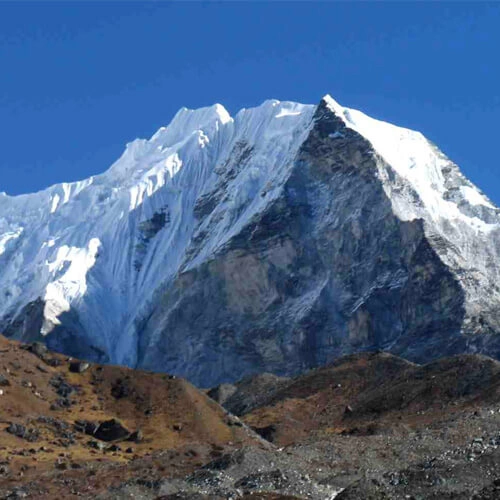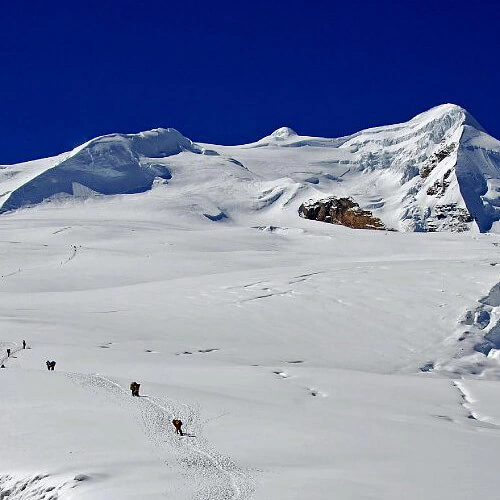Lobuche Peak Climbing Overview
The Lobuche Peak (6119m/20075ft) climbing with the Everest base camp trek offers a thrilling experience on a demanding off-the-beaten-path. Conquering Lobuche East Peak requires excellent physical fitness, a well-prepared physique, and considerable climbing expertise to take on its remarkable challenge.
Nestled in the Khumbu region, Lobuche had two primary peaks: Lobuche Far East and Lobuche East peak. The recommended ascent, Lobuche East Peak, stands 26 meters higher than its Far East counterpart. Prepare to exceed your own expectations as you commit to ascending Lobuche Peak, which is more challenging than Island Peak (covered in the Everest region).
Upon reaching the summit of Lobuche Peak, you'll be rewarded with breathtaking vistas of iconic mountains including Mount Everest, Lhotse, Nuptse, Ama Dablam, and Pumori, among others. Additionally, you'll have the opportunity to immerse yourself in the renowned Everest base camp and Sagarmatha National Park, a haven of Himalayan flora and fauna.
The combines journey to Lobuche Peak climbing with the EBC trek starting from Kathmandu and a half-hour flight to Lukla. This expedition covers renowned sites in the Everest region like Namche Bazaar, Tengboche, Everest Base Camp, and Kalapather, all offering awe-inspiring mountain panoramas, including the majestic Mt. Everest.
Afterward, your trail leads you to the pinnacle of your desires, Lobuche Peak. Trained with a proficient and experienced Sherpa team, your long-awaited dream adventure unfolds, ensuring a secure and exhilarating trip from start to finish.
Best Time for Lobuche Peak Climbing with EBC Trek
The best time for Lobuche Peak climbing with the Everest Base Camp trek is during the Sprinpring (before monsoon) and Autumn (post-monsoon) seasons. These periods provide the most favorable weather conditions for climbing and offer splendid views, making them ideal for such an adventure. Here are the details:
Spring: March to May
- Spring is considered the best time for climbing Lobuche Peak and trekking to Everest Base Camp. The weather is relatively stable, with clear skies and moderate temperatures.
- The trail is adorned with blooming rhododendrons and other colorful flora.
- The peak climbing and trekking routes are less crowded compared to the autumn season.
Autumn: September to November
- Autumn is another excellent time for Lobuche Peak climbing with the Everest Base Camp trek.
- The weather is generally dry and stable, providing clear views of the surrounding peaks and landscapes.
- The temperatures are pleasant during the day and comfortable for trekking.
Both spring and autumn offer the best chances for successful peak climbing and a rewarding trekking experience. The weather is usually clear, and the overall conditions are conducive to an enjoyable and safe journey. Keep in mind that the weather in the mountains can be unpredictable, so always check the local forecasts and be prepared for changes.
Who Can Climb Lobuche Peak with Trek to Everest Base Camp?
Climbing Lobuche Peak requires a certain level of mountaineering experience and physical fitness due to its challenging nature and high altitude. Lobuche peak climbing is generally considered a technical trekking peak, and it still poses its own set of challenges.
Difficulty Level:
- Challenging: Lobuche Peak is graded as a challenging peak, which means it requires some basic technical skills. There are sections that involve using crampons, ice axes, ropes, and basic climbing techniques.
Who Can Climb?
- Previous Trekking Experience: People who have experience in high-altitude trekking and basic knowledge of mountaineering techniques can be sufficient.
- Physical Fitness: Climbers should be in good physical shape and have the stamina to endure long days of trekking at high altitudes, and the demands of the climb.
- Technical Skills: Climbing to Lobuche is not extremely technical, but climbers should have some basic peak climbing skills, such as using crampons, ice axe, and roped travel.
We must provide experienced climbing guides and Sherpas, our guides provide training and support, and make sure safety during the climb. Please do not hesitate to contact us for further assistance.



